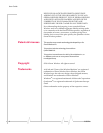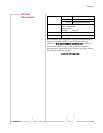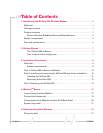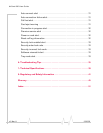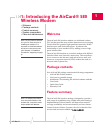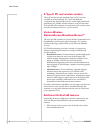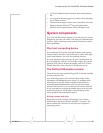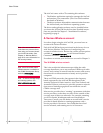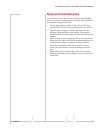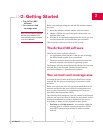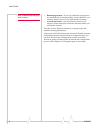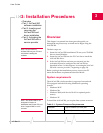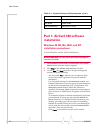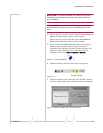
User Guide
4 2130374
The AirCard comes with a CD containing this software:
• The Watcher application required to manage the AirCard
and monitor your connections. (This User Guide outlines
the details of Watcher).
• The driver software that enables communication between
the AirCard and your Windows
®
operating system.
The driver and application software must be installed before
you insert the AirCard 580 for the first time. Detailed instruc-
tions are provided in Chapter 3: “Installation Procedures”,
beginning on page 9.
A Verizon Wireless account
In order to begin using the AirCard 580, you must have an
account with Verizon Wireless.
Note: You can use the Lock
Code feature to prevent others
from using your account should
your AirCard be stolen. (See
Chapter 4: “Watcher Basics”,
page 25 for more information on
this security feature).
Each AirCard 580 has been provisioned at the factory for use
with Verizon Wireless. The process of configuring your
account is called activation. Review the various account options
available at
verizonwireless.com, or call Verizon Wireless
Customer Service at:
1-800-2-JOIN-IN.
Procedures to activate your AirCard are covered in Chapter 3.
The 3G CDMA wireless network
Note: More information about
CDMA networks is available on
the CDMA Development Group
web site, www.cdg.org.
This is the worldwide infrastructure providing the radio
coverage that allows you to stay connected. Made up of radio
towers, and a variety of network switches, routers, and servers,
the network is an interconnection of many service provider
companies.
Note: To review coverage maps
and roaming options, visit:
www.verizonwireless.com.
There are CDMA networks, that operate in the frequency
bands supported by the AirCard 580 throughout North
America and parts of Latin America, Asia, New Zealand, and
Australia. However, each service provider operates a network
that covers a limited geographical area within the overall
CDMA coverage area.
Most service providers have “roaming” agreements with other
service providers, so that they can offer service outside of the
coverage area of their own networks. For example, assuming
you live in Seattle, Washington and travel frequently to
Vancouver, Canada, you can obtain an account with a service
provider in Seattle that has a roaming agreement with a
service provider in Vancouver. You would then have local
service in Seattle, and roaming service in Vancouver.



